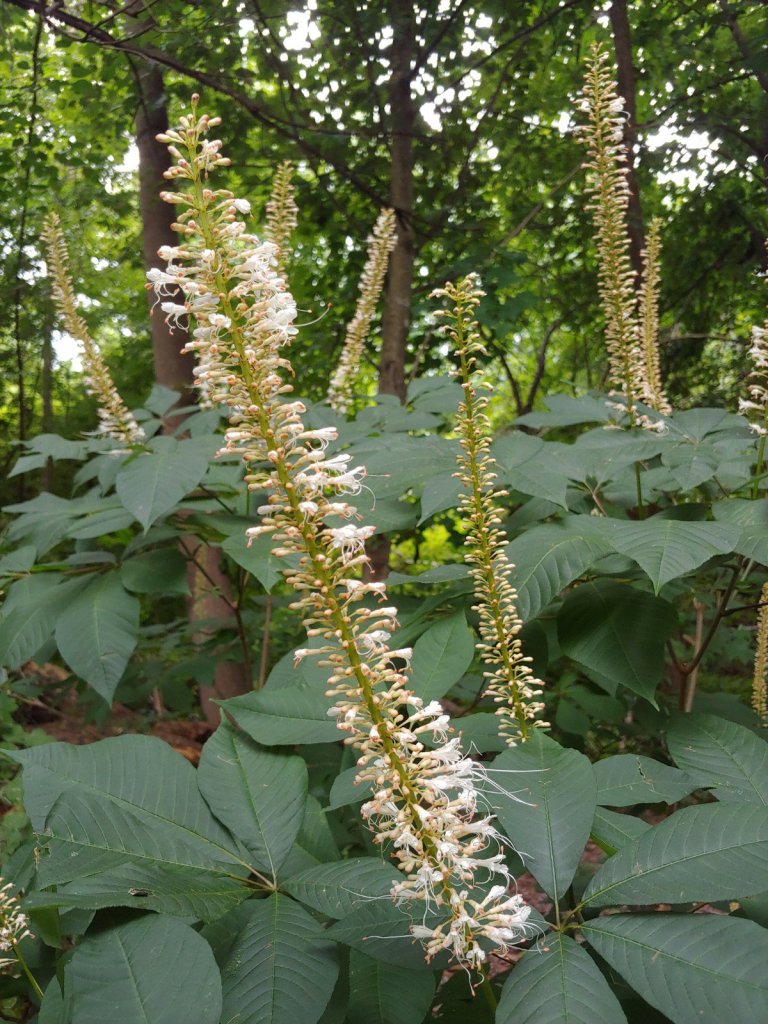I read from garden acquaintances that Bottlebrush buckeye (Aesculus parviflora, below) flowered weeks ago in area gardens, but here, in moderate shade it is just beginning. I will be travelling for two weeks, unfortunately with my return just as flowers are fading, I expect. Otherwise, I have no quarrel with the late blooming, which I’ve come to expect with shade and a low lying garden that traps winter’s chill.

A second buckeye, a chance seedling in damp ground at the far end of the garden, is heavily shaded, and rarely has more than a few flowers. A third that was planted, supposing that a seedling growing in very damp soil indicates Bottlebrush buckeye will tolerate constantly saturated soils, barely survives, so of course it has no flowers.

A variety of Joe Pye weeds (Eutrochium dubium ‘Little Joe’ and others, until recently classified as Eupatorium, above) grow in a range from dry to standing water with little apparent difference in growth, and all are nearing peak flowering except the few that were pruned by deer several weeks ago. These will bloom a few weeks later, I expect.

Several native, tall growing Joe Pye weeds (above) from the neighboring wetlands have take residence in shallow water at the edge of the koi pond. Between yellowflag irises and Joe Pye weeds, invasive Japanese stilt grass is finding less space, so I have no complaints, though with towering Joe Pye and irises the large pond now seems half the size.
Wonderful butterfly picture Dave! 😀 enjoy your travels!
Our native buckeye is so variable that we do not like to specify the season in which it should be expected to bloom. It seems to prefer to bloom in early summer, but might bloom as late as autumn, or as early as spring. It happens to be blooming right now, but only sparsely. There were a few earlier blooms, and will likely be a few later. It seems to bloom within a more defined and earlier phase after a nice cool winter. Ours is also ‘twice deciduous’. It defoliates for winter dormancy, and can also defoliate in the middle of summer if the weather gets too warm and arid. If it does, it refoliates briefly in autumn before defoliating again for winter. Not all of them do it. Those that are more exposed will do so. Those that are down in damp riparian situations will not. It is a weirdly variable species.